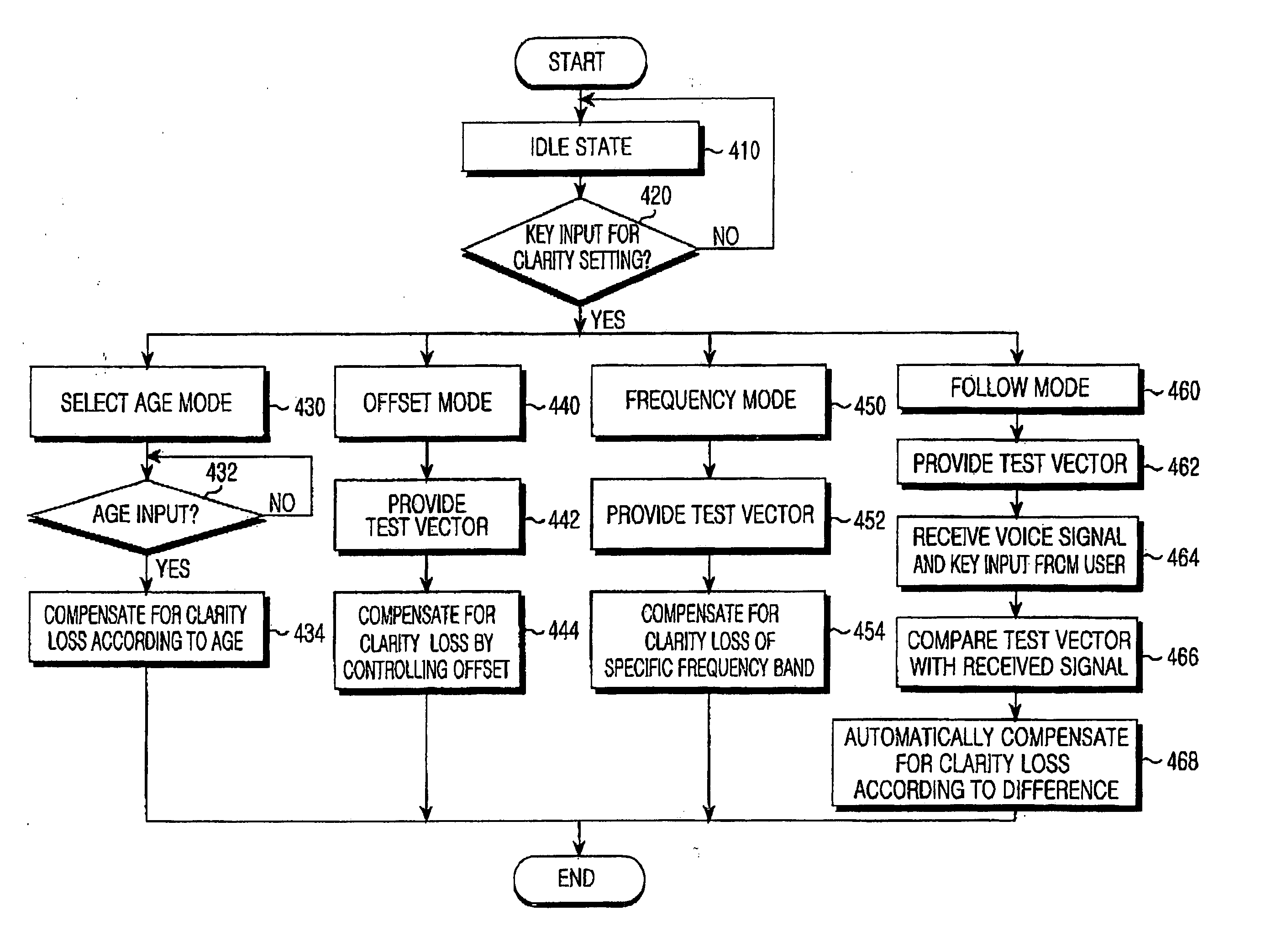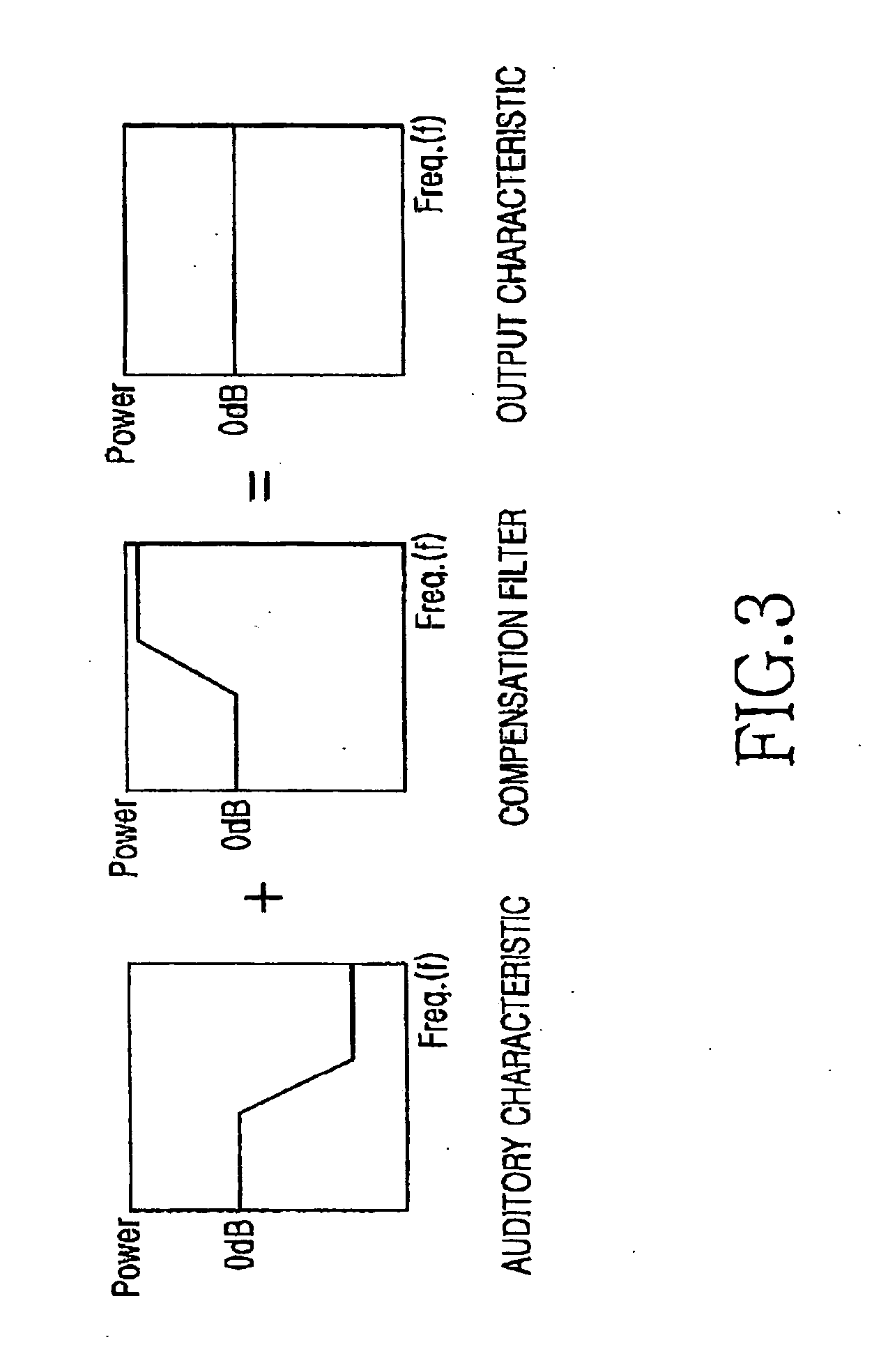Apparatus and method for controlling frequency band considering individual auditory characteristic in a mobile communication system
- Summary
- Abstract
- Description
- Claims
- Application Information
AI Technical Summary
Benefits of technology
Problems solved by technology
Method used
Image
Examples
Example
First Embodiment
Age Mode
[0026] In the first embodiment of the present invention, the mobile terminal compensates for a specific frequency band using the characteristics of hearing ability versus age illustrated in FIG. 1.
[0027] In step 430, if the user selects the Age mode for the clarity setting using the key input unit, a controller of the mobile terminal enters the Age mode and displays an Age mode menu on the display. The controller determines in step 432 whether an age of the user is input using the key input unit having a plurality of alphanumeric keys. If an age of the user is input, the controller access, in step 434, frequency characteristic data for the input age stored in a database or a memory included in the mobile terminal. Upon accessing the frequency characteristic data for the input age, the controller applies a control signal to a compensation filter included in the mobile terminal, and the compensation filter compensates for a loss of the frequency band accordi...
Example
Second Embodiment
Offset Mode
[0029] In the second embodiment of the present invention, the mobile terminal compensates for a specific frequency band on an offset basis.
[0030] In step 440, if the user selects the Offset mode for the clarity setting using the key input unit, the controller enters the Offset mode and displays an Offset mode menu on the display. In step 442, the controller applies a control signal to a modem to provide the user with a predetermined sample voice source through a speaker. The sample voice source will be referred to as a “test vector.” For example, it will be assumed herein that a voice source “hello” is provided as a test vector. In this case, if the user has perceived the presence of a sound corresponding to the voice source “hello” provided through the speaker, but has difficulty in correctly discriminating the voice source, the controller proceeds to step 444. In step 444, the controller applies a control signal to a compensation filter included in t...
Example
Third Embodiment
Frequency Mode
[0033] In the third embodiment of the present invention, the mobile terminal controls a specific frequency band of a received voice signal in detail thereby to provide a more perfect voice source.
[0034] In step 450, if the user selects the Frequency mode for the clarity setting-using the key input unit, the controller enters the Frequency mode and displays a Frequency mode menu on the display. In step 452, the controller applies a control signal to the modem to provide the user with a predetermined sample voice source through the speaker. The sample voice source will be referred to as a “test vector.” For example, it will be assumed herein that a voice source “hello” is provided as a test vector. In this case, if the user has perceived the presence of a sound corresponding to the voice source “hello” provided through the speaker, but has a difficulty in correctly discriminating the voice source, the controller proceeds to step 454. In step 454, the c...
PUM
 Login to view more
Login to view more Abstract
Description
Claims
Application Information
 Login to view more
Login to view more - R&D Engineer
- R&D Manager
- IP Professional
- Industry Leading Data Capabilities
- Powerful AI technology
- Patent DNA Extraction
Browse by: Latest US Patents, China's latest patents, Technical Efficacy Thesaurus, Application Domain, Technology Topic.
© 2024 PatSnap. All rights reserved.Legal|Privacy policy|Modern Slavery Act Transparency Statement|Sitemap



